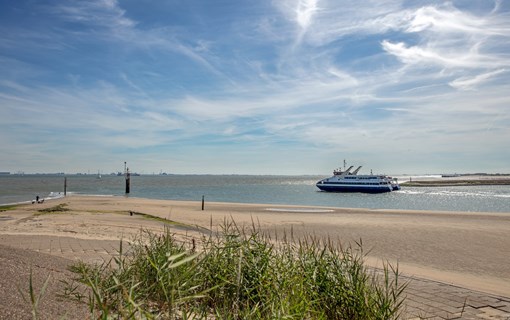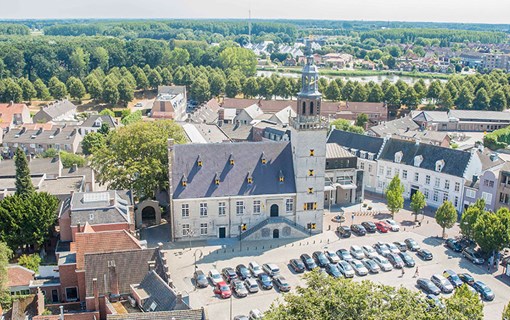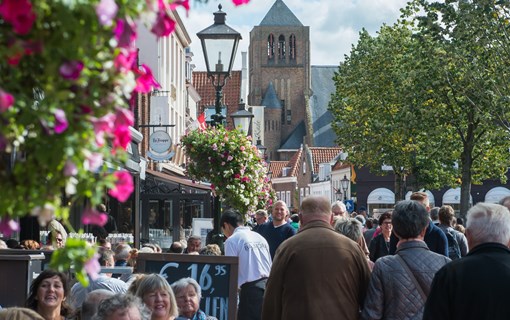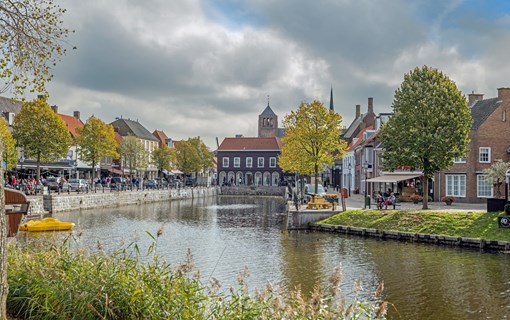
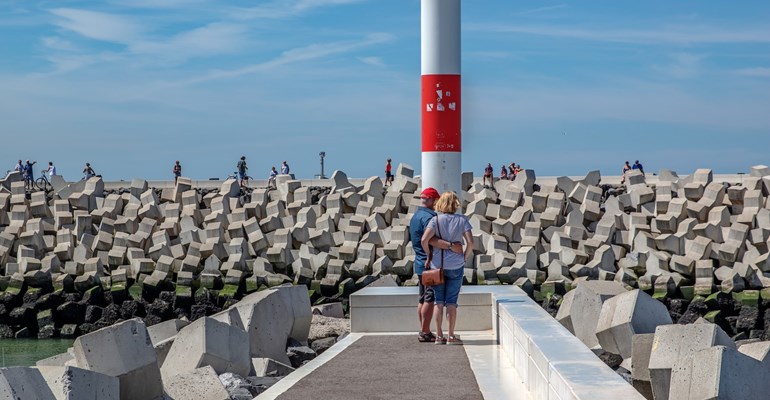
Zeeuws-Vlaanderen
Surrounded by the Westerschelde estuary and the North Sea, the vast beaches of Zeeland-Flanders are a beloved destination for bathers and nature lovers. The region also has two major nature reserves. Het Zwin, in the west, is a well-known archaeological site where 40-million-year-old sharks’ teeth have been found. To the east, het Verdronken Land van Saeftinghe (the Drowned Land of Saeftinghe) is Europe’s largest saltwater swamp. Zeeland-Flanders borders Belgium and has a fun-loving atmosphere. Nevertheless, the beaches, dunes and vast polders are all quintessentially Zeeland. Walking or cycling through Zeeland-Flanders, you may come across the artistic village of Groede or the mussel village of Philippine. You will also find fortified towns, like Hulst and Sluis.
History
The eastern and western parts of Zeeland-Flanders were once separated by De Braakman, an ancient estuary. Breskens (more commonly called Bresjes) used to consist of many islands. Het Zwin was once a substantial estuary that connected Bruges to the North Sea via Damme. Zeeland-Flanders was part of the County of Flanders until 1600. It was subsequently ruled by the States General of the Dutch Republic until 1795. In July 1814, Zeeland-Flanders became part of the province of Zeeland.
The former islands of Terneuzen, Zaamslag and Axel were now controlled by Middelburg. This gave the region its Calvinist character, although the eastern part still has a strong Catholic flavour. Zeeland-Flanders is also known as a sort of separate country, with its own flag and anthem.
Villages and towns
Aardenburg is the oldest town in Zeeland. In the 12th century, it was one of the first Dutch towns to gain city rights. Sluis and Hulst are true fortified towns; you can walk along more than 3.5 kilometres of city walls in Hulst. Sluis boasts the only town hall in the Netherlands with a belfry. The artistic village of Groede is well known for its paptaarten, tasty custardy cakes which landowners used to offer farmers after they paid their leases.
